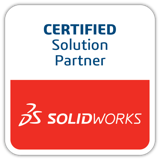Direct CAD Integrationfor quicker iterations


Photopia works directly inside of Solidworks and includes Rhino, giving you optical design tools directly in your CAD package.
Lamp and Material Libraryfor improved accuracy
No more guessing at scatter coefficients or spending hours building a light source model.
Photopia has over 1544 materials and 1405 lamps you just pick from the library and drop into your model.
Low Cost for Quick ROIsave up to 50%
With features that match or exceed our competitors at significant cost savings, you'll have a better tool and save money for your organization, a win-win.